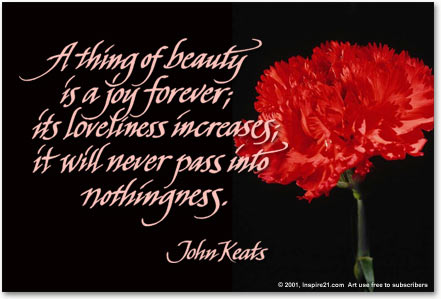John Donne- John Donne was a famous English poet of the 16th century, who wrote endlessly about religion, love, sexuality. His outlook was far more advanced than the 16th-century society people could tolerate, and this why he had faced severe criticism. Yet against the odds, he had been made the cleric of the Church of England. He was a representative of metaphysical poetry. He wrote about mundane topics in the form of satires. In this poem, though Donne is not referring to a physical connection, he still talks about the driving force of love. It is said that the beloved mentioned in this poem is Anne Morre. He died on 31st March 1631.
Poetic Devices in A Valediction: Of Weeping-
Metaphors: The poet has used three elaborate metaphors in the form of figurative speech- “Tears” as fruits of grief. The poet also symbolises tears reflecting his beloved’s face as worthy as coins and stamps. The poet explains the power of natural calamities less than the power of calamity caused by the beloved’s sorrow. The poet also elaborates to drown heaven with her tears.
Summary of A Valediction: Of Weeping-
The word valediction means bidding farewell, and here, the poet asks his beloved not to shed any tears on his departure, given that if she doesn’t stop herself from crying, it will end up leading to him crying as well when he is away and far gone. The poem is an anthem of adoration and love. The beloved is obviously not happy for parting away from her lover. And we assume she is crying sorrowfully and endlessly. So the poet, who also happens to be the lover tries to console her by saying that if she doesn’t stop, he will die in the voyage and then she would never be able to see him again. John Donne was a representative of metaphysical poetry. His elaborate use of metaphor makes even the simplest themes become carriers of depth. The poem initiates with a comparison of tears with coins. The poet says that while he is still before her, he wishes her to cry her heart out, wherein each tear will behold the reflection of the beloved’s face. He says that if our tears hold each other’s reflection, they become worthy as coins. Further, moving from coinage to pregnancy, he says that the tears bear sorrow, and they mean a lot more than merely understandable. As the tears fall, the images of each other also fall with it. He says when the lady will come to see him off, standing on the sea-shore, they both will shed tears of his departure, and when the tears will fall with the image of each other, they will come to “nothing,” meaning they will be feeling broken and helpless.
The poet uses one more metaphor, as he moves on to the next stanza. The theme is still the same, but the direction of comparisons change. The poet talks about a globe maker, and the workman marks different continents on the globe as part of his job. He says that the art of globe maker converts a dull round ball, into a piece of the globe. The poet goes on further to elaborate his metaphor, that the physical world is seen in the reflection of tears when he cries in front of his beloved. The poet tries to add an extensive meaning to the crying of his beloved. He says that as the globe without the map is nothing, similarly, the tears without each others’ reflection are nothing. He concludes that when our tears will meet, they will have the power to overflow both heaven and earth.
In the last stanza, the poet uses yet another significant metaphor, where he starts off by exaggerating that the power of their grief is far more than the power of tides. The moon controls the tides, but the beloved’s sorrow will be the reason causing the sea and the wind to lose control of themselves and destroy everything that comes their way. The poet says the tides though causes harm for the limits of purpose, but her grief will destroy them irrevocably. The poet ends on a note of fear on part of his beloved, that they will now have to wait to see how will the separation cause each other to sigh more, meaning to cry for each other more, because whosoever will cry more, will be the reason of the other’s death.
Critical Analysis of A Valediction: Of Weeping-
The poem is divided into three basic stanzas, where each stanza refers to one elaborate metaphor which is independent of other metaphor used in the other two stanzas, forming no connection. The only connection is a theme, which is intact in the entire poem. We can assume this poem to have autobiographical elements of Donne but he hides it under the shadow of strict metaphors so much so that one is never sure that whether he is showcasing his talent or faithfully talking about his sorrows. The poet tries to add a celestial glimpse when he talks of moon and sea and wind and of their love of being powerful even than the natural calamities.
Tone of A Valediction: Of Weeping-
The tone of the poem can be regarded sorrowful, but that doesn’t form any connection in a series. The poem is subjected to be written on an interpersonal level but since Love was Donne’s genre, one cannot say much about the background.
Conclusion- The poet is headed for a sea voyage and the entire whining and crying is due to the separation, through the usage of different metaphors. The poet wishes to ask her beloved not to weep, because it will make her sick and weary until he returns, so he tries to comfort her with massive elaboration that he might not return if she continues to weep in such manner.
Some online learning platforms provide certifications, while others are designed to simply grow your skills in your personal and professional life. Including Masterclass and Coursera, here are our recommendations for the best online learning platforms you can sign up for today.
The 7 Best Online Learning Platforms of 2022
- Best Overall: Coursera
- Best for Niche Topics: Udemy
- Best for Creative Fields: Skillshare
- Best for Celebrity Lessons: MasterClass
- Best for STEM: EdX
- Best for Career Building: Udacity
- Best for Data Learning: Pluralsight













